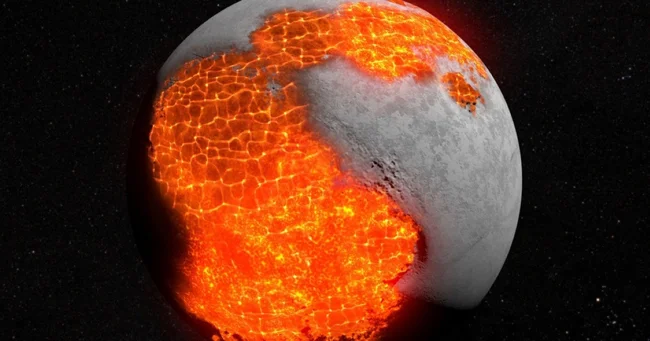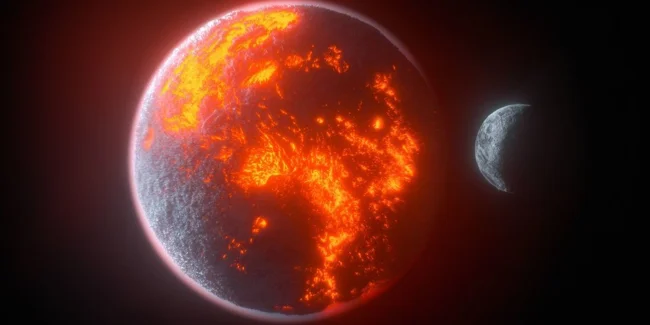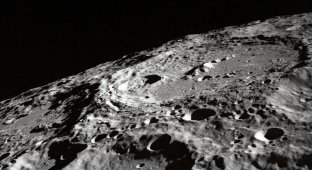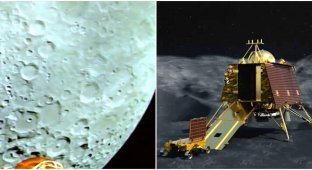New evidence has been discovered that the Moon was an ocean of magma (3 photos + 1 video)
Scientists believe that the Moon was formed as a result of a collision between the early Earth and a protoplanet. The impact separated a large piece of matter, which eventually turned into our satellite. Initially, the Moon was covered in an ocean of magma, but over millions of years it cooled and became what we know it as. New data confirms this theory. 
After the collision, which occurred 4.5 billion years ago, the debris came together, and the heat released by the impact melted the rock. This is how the lunar ocean of magma was formed. For 200 million years, the rock solidified, turning into the rocky surface that we see today. But the story is not that simple, as evidenced by minerals in a sample from the Indian lunar rover Pragyan, which was carried aboard the Chandrayaan-3 mission's Vikram lander. 
The lunar soil, known as regolith, was collected near the south pole of the celestial body. This unique sample contains large amounts of ferroan anorthosite, a rock formed when magma cools. 
The study's author, Santosh Wadawale, said: "The key evidence for the lunar magma ocean hypothesis is the presence of a predominantly anorthositic crust."
The finding is consistent with studies of other, more studied regions of the Moon.
Interestingly, heavier rocks were found in the lunar "soil" that should have sunk into the magma. The researchers believe that asteroid impacts could have lifted them to the surface.


























